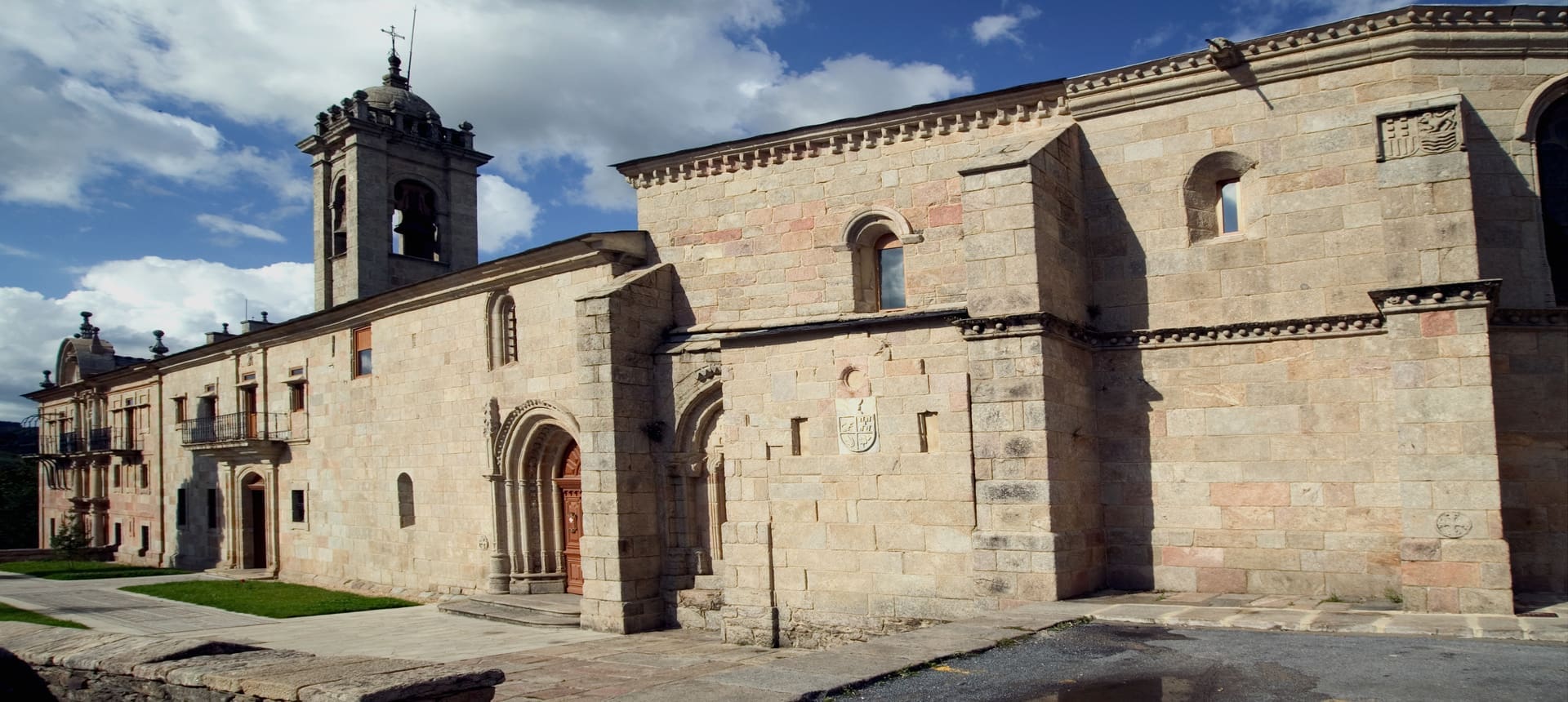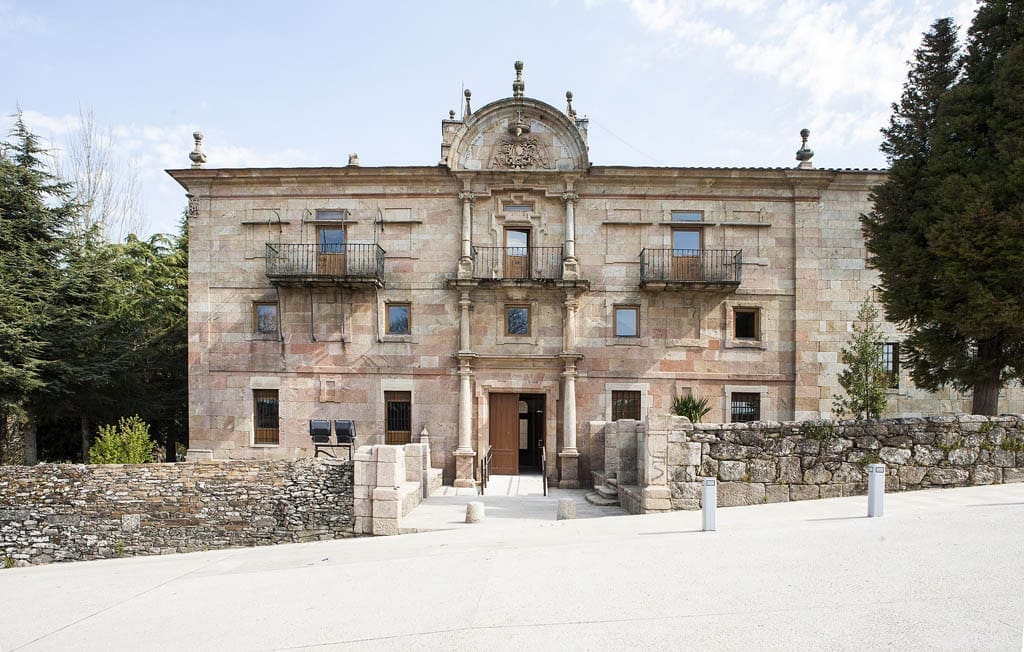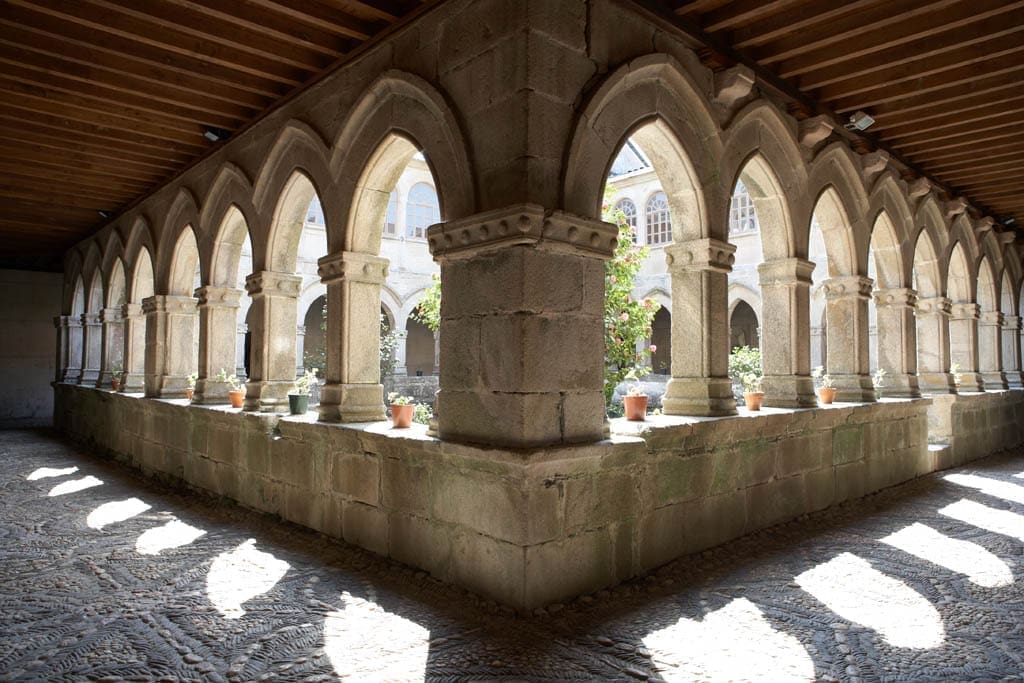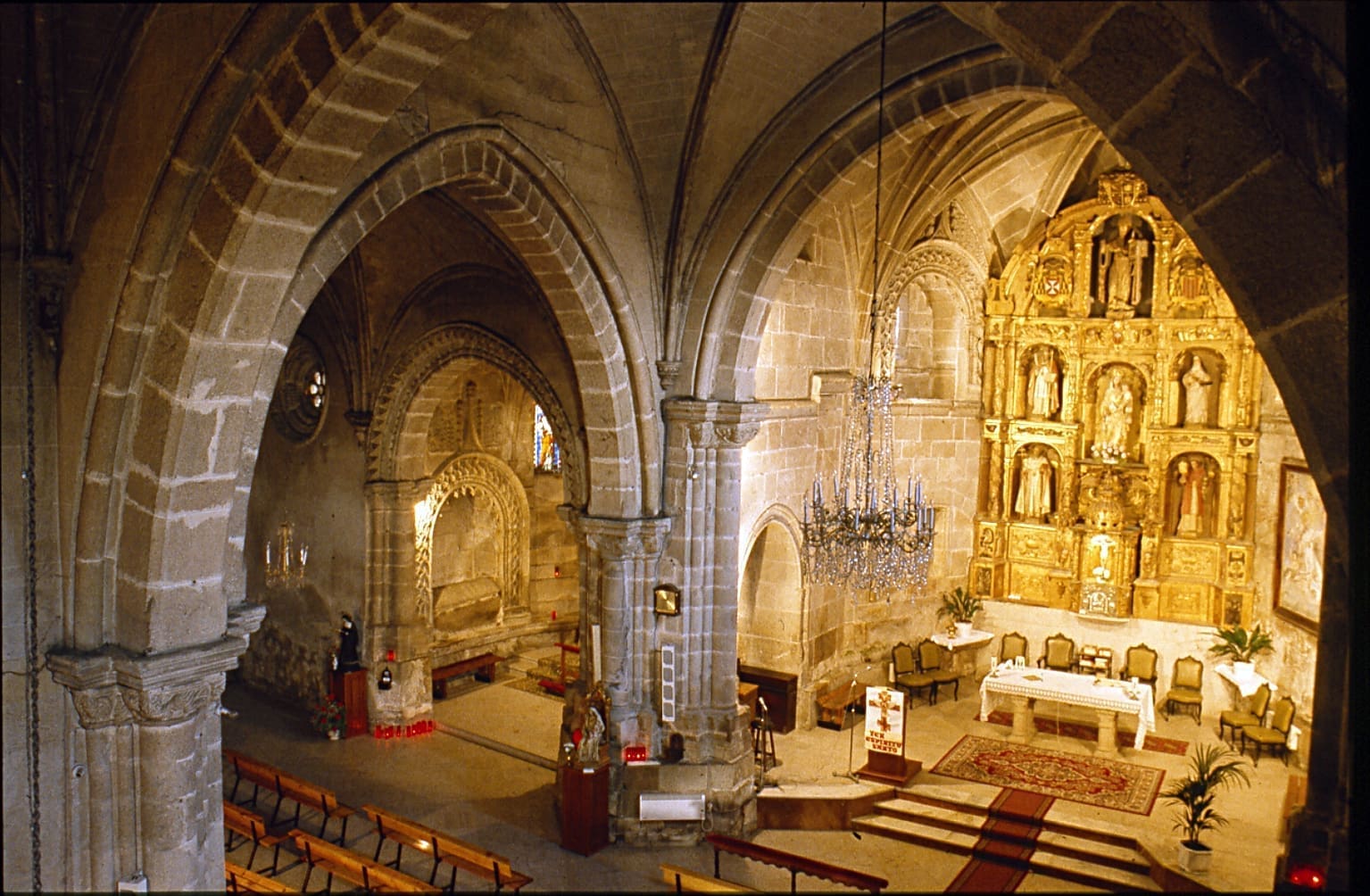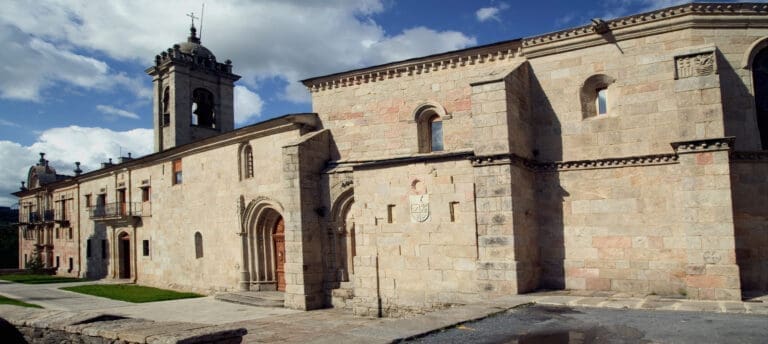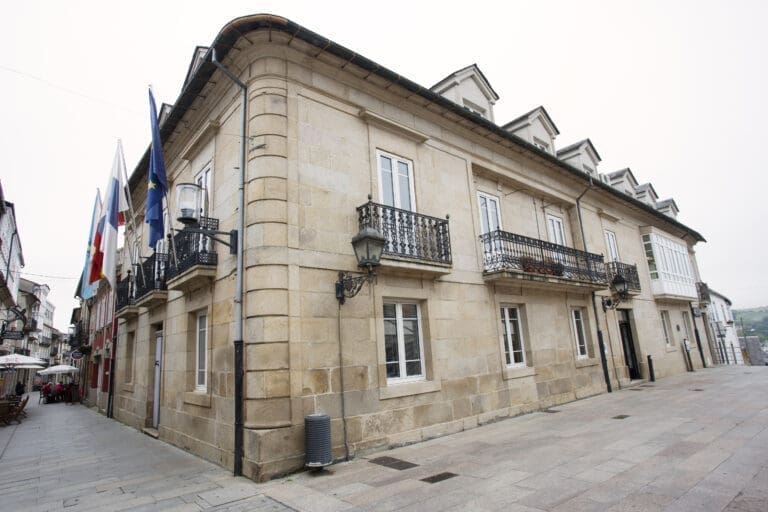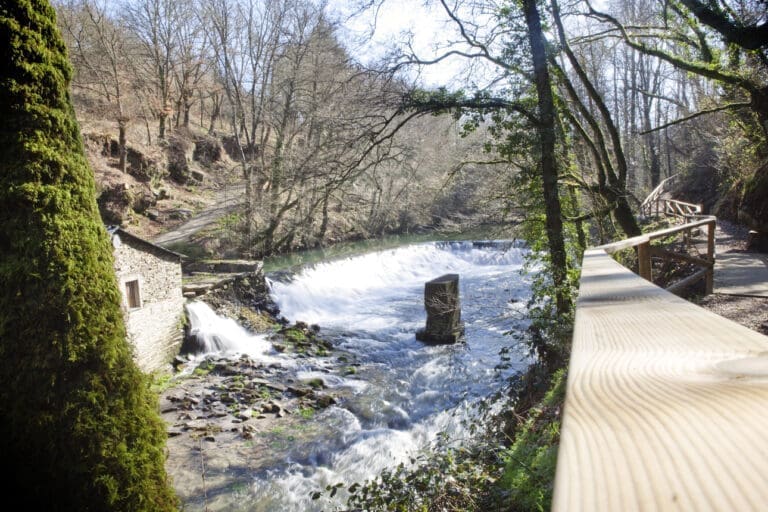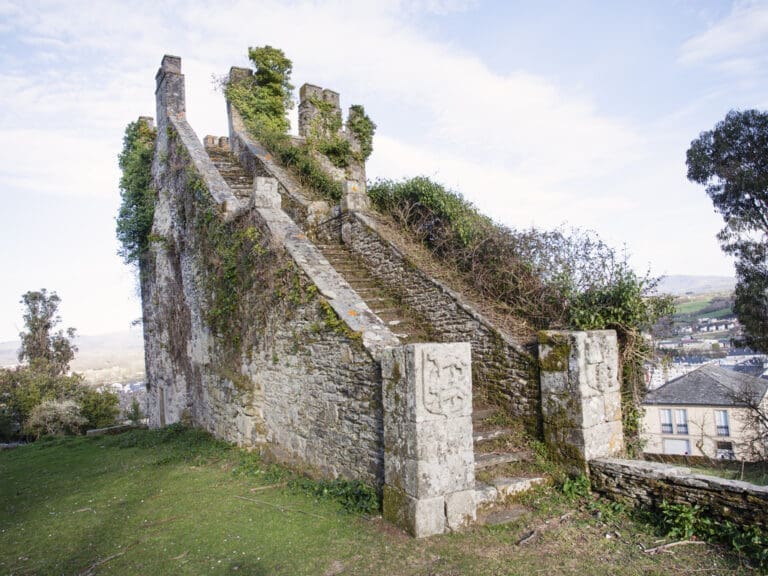Currently governed by the Order of the Merced, it was an institution for the reception of pilgrims who “went to Compostela”, promoted at the beginning of the 13th century by some Italian friars (“Laudantes Deum”) next to the chapel of San Brais de Vilanova. From them derived the Order of Penance of the Blessed Martyrs of Christ, exclusively Sarriana in its origin and development, which extended to Arzúa and Ferreiros de Arzúa, and in 1568, ending its independent life and perpetual priors, was forcibly integrated into the Order of the Regular Observance of St. Augustine. They maintained until the middle of the XVIII century the hospital of San Roque or Madalena (where the Cemiterio Novo is), and until the exclaustration, in 1832, the so-called “Hospitaliños Novos” in the “Obra Nova” promoted by Bishop Armayá.
It is the most representative building of the village and keeps as Romanesque remains (XIII century) a door in the cloister and an arch in the Chapel of Santo Cristo. From the Gothic period (XIV-XVI centuries), corresponding to the second and third churches, it preserves a rose window, tombs and niches of Manueline style, the main chapel and a late cloister (1514) with an interesting pebble floor. The main altar and the image of San Agustín that presides over it are the work of the carver Gregorio Fernández, father of the famous sculptor of the same name who, a native of Sarria, left in Valladolid an accomplished example of his mastery and spirituality.
By a bull of Pope John XXII (1322) and another of Clement VII (1534) granted pilgrims and benefactors of the Hospital and the Monastery very broad indulgences.
The walled door of Santa María Magdalena, with an image of the saint, corresponds to the second church. The entrance door to the temple, with the cross of the “madalenos” next to it, is the third church and is in front of the Puerta de Gracias, which gives access to the cloister. The Convent Gate and the Porta dos carros complete the accesses to the monastery.
The tower and the Obra Nova are from the 18th century. On the door of the Hospitaliños Novos is the legend “Charitas aedificat” which summarizes the spirit of Christian hospitality of the communities that lived there.
A magnificent Augustinian coat of arms, bordered by the legend “Sicut aquila incitans ad volandum pullos suos”, and several coats of arms of the noble families that ruled the region embellish the whole.
In addition to the Convent and Church of La Merced, the main building and annexes house an educational center and hostel, heir to the original foundation.

 Sarria, Galicia
Sarria, Galicia